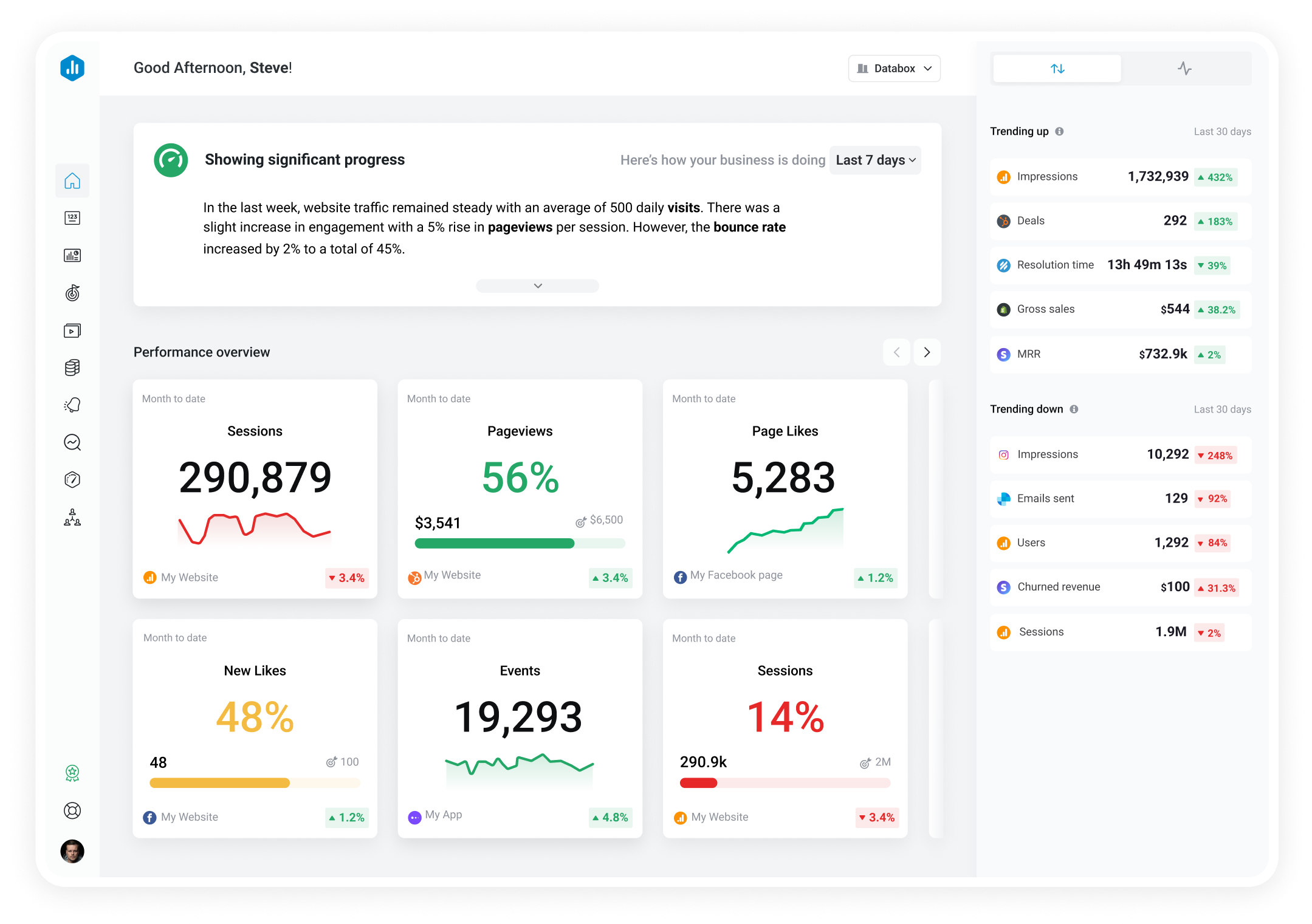Track all of your key business metrics from one screen
GET STARTED
 Xero
Average Value of Invoices
Xero
Average Value of Invoices Average Value of Invoices is a financial metric that calculates the mean monetary value of all invoices issued during a specific period. This metric helps businesses understand their typical transaction size and monitor changes in customer spending patterns.
With Databox you can track all your metrics from various data sources in one place.

Used to show a simple Metric or to draw attention to one key number.
Databox is a business analytics software that allows you to track and visualize your most important metrics from any data source in one centralized platform.
To track Average Value of Invoices using Databox, follow these steps:
 Goals
Goals Scorecards
Scorecards Metric Digest
Metric Digest Metric Builder
Metric Builder Data Calculations
Data Calculations Performance Screen
Performance Screen